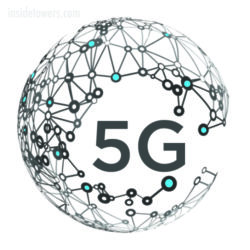The ultrafast speeds that 5G MNOs crow about do not impress Bill Ray, a vice-president analyst at Gartner. Even with its potential of gigabit speeds, 5G is still a technology searching for a purpose, and that purpose so far may not be found in smartphones, he told a Computer Weekly podcast. However, advancements in low earth orbit (LEO) satellites are destined to have a much greater impact on these handsets that we can’t live without.
“There are applications that do need that kind of [gigabit speed] bandwidth but the smartphone as we understand it cannot consume that much bandwidth. So 5G doesn’t improve the user experience,” Ray said.
However, Ray does believe the 5G user experience will be improved by Ultra Reliable Low Latency Communications, which connects the mobile phone, car or your drone to three or four base stations simultaneously. “If one of the base stations is blocked, the connection doesn’t get broken. It just slows down. And that way, you can have completely reliable connections,” he said. But that capability has yet to be deployed.
LEO satellites that orbit at 340 miles above Earth by Starlink are already offering home internet access to half a million people around the world. Users are getting speeds between 100 megabits and 200 megabits per second for $110 a month, and that’s “really changing people’s lives today,” Ray said.
The next vector that LEO satellites will revolutionize is mobile backhaul. For example, KDDI in Japan is deploying 1,200 base stations with LEO satellite backhaul. Each cell ite needs just needs a dish and power, which could be solar or a generator.
“Suddenly you’ve got a mobile phone base station, and you can put that anywhere,” Ray said. “So, it becomes much cheaper to roll out mobile phone infrastructure, whether in Sub-Saharan Africa, India, or the Texas panhandle, or indeed in Scotland.”
The next step in the LEO evolution is to get rid of the base station altogether. Today’s smartphones can send a signal directly to the LEO satellite without having any mobile infrastructure. For example, AST SpaceMobile, Inc., which is building a space-based cellular broadband network accessible directly by standard mobile phones, is planning a launch into low Earth orbit in early to mid-September from Cape Canaveral in Florida.
“AST Space Mobile is applying to offer 4G and should be able to get 80 megabits per second to a mobile phone anywhere in the world,” Ray said.
Without using 5G technology, Lynk Global, Inc. completed pre-commercial tests of its fifth satellite in February, connecting thousands of devices directly to the satellite across five different countries, (Bahamas, Canada, New Zealand, the United Kingdom and the United States), spanning three continents. Mobile phones from eight of the top ten global MNOs were connected.
“Using 2G connectivity, Lynk switched on their test satellite recently across Europe successfully connecting to 6,000 mobile phones. These users thought they were connecting to a base station, but in fact were connecting to a satellite. They did not know the difference,” Ray said.
Gartner is tracking 30 companies that plan to provide LEO communications, few of which it expects to survive. “LEO has the same problem as we have with 5G,” Ray said. “If all of them launch, we will have way too much bandwidth, and no one to pay for it. So most of those companies will go bankrupt. We will see where the market shakes out.”
By J. Sharpe Smith, Inside Towers Technology Editor





Reader Interactions